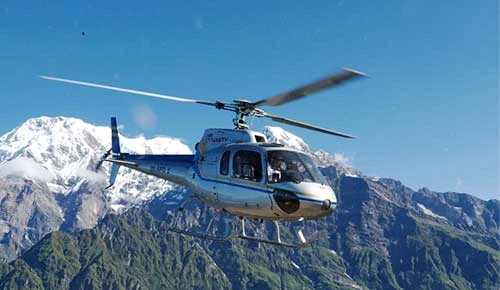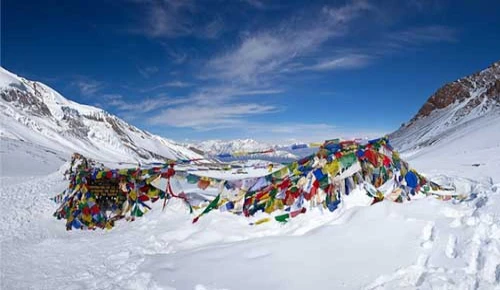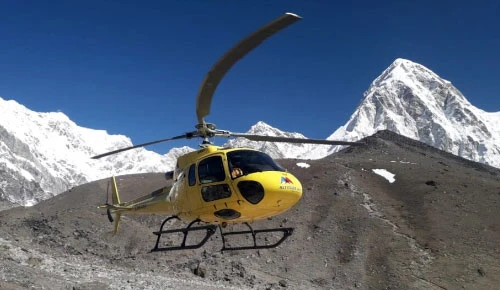Best Seasons for Mardi Himal Region Trekking
The Mardi Region Trekkingis a very obscure yet exceptionally picturesque hike in Nepal. This brief and tranquil trek, situated in the Annapurna region, provides breathtaking vistas of Machhapuchhre (Fishtail), Annapurna South, and Hiunchuli.
It is ideal for anyone seeking a tranquil Himalayan experience, free from the throngs of people. The trail encompasses many terrains, transitioning from verdant forests to alpine ridges, emphasizing the importance of the journey rather than only arriving at the base camp.
This blog will guide you through the best seasons for the Mardi Himal hike, enabling you to plan your journey with appropriate expectations. We will provide insights on the yearly changes in weather, temperature, and trail conditions. If you want to see rhododendrons in bloom in the spring or mountain views in the fall, this guide will help you pick the best time to go on your trip.
Seasons in the Mardi Region of Nepal
Mardi Himal Trekking can be done all season but there are some seasons when doing this trek is the best and there are some seasons when doing the Mardi Himal trek might now be the best idea. Let’s briefly describe the Mardi Himal trek during different seasons.
Spring Season (March-May)
If you are looking for a view of the lush greenery and the clear skies while also enjoying the blooming rhododendrons and wildflowers, painting the trail in a vibrant red, pink, and white, spring is the best time for you to do the Mardi Himal trek. During this time, you will get to experience moderate daytime temperatures ranging from 15°C to 25°C, with cooler nights between 0°C and 5°C. You will find numerous teahouses and lodges operational along the trail, offering comfortable accommodations and warm hospitality during this time.
Autumn Season (September–November)
Autumn is the post-monsoon period, so you will get to experience the crisp air, stable weather, and majestic mountain views, making it ideal for the Mardi Himal trek during this time. The trails are much more well maintained and clearer during this time of the year, making the trek much more comfortable in comparison to other seasons. During the daytime, temperatures range from 10°C to 20°C (50°F to 68°F) at lower altitudes, while at higher elevations during the nighttime, cooler temperatures range from 0°C to -5°C (32°F to 23°F).
Winter Season (December-February)
Trekking the Mardi Himal during the winter provides you with a very unique experience of the trek itself. The crisp winter air often leads to exceptionally clear skies; the mountains are covered in a thick layer of snow, creating a heavenly winter wonderland. You can clearly view the Annapurna Ranges during this time.
Though trekking the Mardi Himal provides a very unique experience, you might also want to keep some things in mind before doing the Mardi Himal trek in the winter season. The daytime temperatures can range from 9°C to 12°C, with nighttime lows potentially dropping to -5°C, especially at higher elevations. You should start the treks earlier, as the days are much shorter during the winter season. Some of the teahouses remain closed during this season, so you will have limited access to teahouses as well. Snow accumulation can make trails slippery and challenging, requiring appropriate gear and caution
Monsoon Season (June-August)
The monsoon season transforms the landscape into a lush green paradise, with vibrant flora and cascading waterfalls. Very few hikers prefer to do this trek during the Monsoon period. So, if you are a type of trekker who likes a more private experience with fewer tourists on the trail, you can also try to do this trek in this season as well. The days are also longer during this season, providing you more time for exploration and immersing yourself in nature.
There are a few things you might have to consider before doing the Mardi Himal Trek in the Monsoon season. Daily rainfall can make trails muddy and slippery, increasing the risk of accidents. The wet conditions can lead to an increase in leech activity along the trail. Cloud cover and fog may obscure mountain views, limiting the experience of the trek. It is recommended to do the Mardi Himal trek during the monsoon only if you are an experienced trekker, as the muddy and slippery trail makes it much more challenging for beginner trekkers.
Table of Contents
What are the best seasons to do the Mardi Himal trek?
The Mardi Himal trek is best during the spring, from March to May. Clear skies provide comfortable temperatures paired with spectacular mountain views. These hikes on the trail wander through blooming rhododendron forests, adding colors and freshness. One can revel in lovely weather during the day while having many chances to distinctly see the peaks of Mt. Machhapuchhre. Being a highly favored trekking period, you'll have fellow trekkers accompanying you.
Another great time to do the Mardi Himal trek is during the autumn season, which spans from September to November. The breathtaking views of the mountains fill your heart with excitement as the weather clears at the end of the rainy season. There is excellent weather during this time—sunny days and cool nights—making it pleasant to stroll around. For an autumn photographer, the fall season is perfect weather because everything looks crisp and sharp. This is the time of year to enjoy serene weather and breathtaking vistas.
Experiences during Spring and Autumn Season
Both Spring and Autumn are the best seasons to do the Mardi Himal trek but if you are still having a hard time figuring out which season you want to do the Mardi Himal Trek, there are some of the best features both these seasons have to offer:
Features | Spring | Autumn |
Weather | Mild and Occasional rainfall | Dry and stable |
Trail Condition | Generally dry, some muddy patches | Dry and stable |
Views | Clear sky and vibrant landscapes | Crystal clear view, excellent visibility |
Crowd | Moderate to high | High |
Festivals | Buddha Jayanti, Holi | Dashain, Tihar |
Accomodation | Moderate availability, early booking recommended | High demand, early booking essential |
Best for | Nature lovers, cultural enthusiasts | Photographers, Those seeking clear views |
Both of these seasons provide a unique experience to trekkers. If you are more into nature and culture, spring is the best season for you to do this trek but if you are more into viewing the majestic mountains of Nepal while also having the best trekking experience and photographs. Autumn is the best season for you to do the Mardi Himal trek.
Mardi Himal Trek During Off-seasons
During the off-seasons, like monsoon (June to August) or winter (December to February), trekking Mardi Himal can be an unforgettable experience. The trail is less busy, so you may enjoy more peace and quiet. You'll cross lush forests and ridges that are covered in clouds. When the sky clears, you might be able to see the mountains. There are also less people in the local teahouses, so you may get personal service and find comfortable places to relax.
But there are certain problems with off-season journeys. During the monsoon, the path can be slippery and dangerous and there may be leeches and clouds that block your view. It can get very cold in the winter, especially around the base camp, and some teahouses might not be available. The off-season Mardi Himal trek may still be a fun journey with a more raw and calm Himalayan experience if you have the necessary gear, plan ahead, and are open to new ideas.
Mardi Region Trekking Packages
There are many different ways to approach the same trek, all of them offering a unique experience of their own. This is a list of trekking packages for doing the Mardi Himal trek:
- Mardi himal luxury trek- 8 days
- Mardi base camp trek- 9 days
- Mardi Himal helicopter tour
- Mardi Himal Trek - 5 days
How can I make my Mardi himal trek experience better?
You might have been missing out on so much without even noticing it. These are some of the tips you can apply to make your Mardi himal trek much more comfortable and better in general.
- Train in advance to build stamina and prepare for the altitude.
- Ascend slowly to help your body acclimatize better.
- Drink plenty of water to stay hydrated throughout the trek.
- Pack light and smart with only essential gear.
- Carry enough Nepali rupees, as there are no ATMs on the trail.
- Hire a licensed guide and get the required permits beforehand.
- Respect local culture and nature by following trail etiquette.
- Check the weather and prepare for limited electricity or internet.
- Start your trek early and take regular breaks to avoid exhaustion.
Conclusion
Spring offers a colorful and culturally rich trekking experience with blooming flowers and local festivals. However, it comes with moderate crowds and potential for light rainfall. Autumn provides crystal-clear views and excellent trekking conditions, ideal for photography and those seeking unobstructed mountain vistas. The trade-off is the higher number of trekkers and the need for early reservations.
Both seasons offer unique experiences on the Mardi Himal Trek. Your choice should align with your preferences for weather, crowd levels, and cultural experiences
Doing this trek during off-seasons also provides a very unique experience of its own but it is much more recommended to do this trek in the best seasons if you are a beginner trekker and are doing this trek for the beauty that the Mardi Himal trek has to offer.
If you are keen to do the Mardi Himal Trek, visit Nepal Trek Adventure and book your trek on your preferred date.








